Container options run and scale-up containerized workloads with safety, open supply innovation, and fast deployment. Docker simplifies software deployment with light-weight, moveable containers, guaranteeing consistency, scalability and efficiency across environments. Machine learning relies on massive language models (LLMs) to perform high-level natural language processing (NLP), such as textual content classification, sentiment analysis and machine translation. Container orchestration helps speed the deployment of large language models (LLMs) to automate the NLP process. Additionally, organizations use container orchestration to run and scale generative AI fashions, which provides excessive availability and fault tolerance.
Many conditions can be predefined, like the position of containers based mostly on memory availability, metadata, user-defined labels, or available CPU capability. Multi-cloud is a cloud computing strategy in which you rely on companies from two or extra different third-party providers. Multi-cloud container orchestration is the use of a software to handle containers that move throughout multi-cloud environments as an alternative of operating in a single infrastructure. Container Orchestration is the automated coordination of containerised functions for deployment, scaling, and administration throughout clusters.
Highly Effective Docker Alternate Options To Consider In 2025
Managed via tools like Docker and Kubernetes, which deal with deployment, scaling, and networking duties. A container is an executable unit of software packaged to contain every thing it needs to run. Microservices refers to the technology that makes it potential to separate up a big (monolithic) application into smaller, multiple providers, each performing a selected function. Containerization is the method of creating, packaging, and deploying functions in containers.
Container orchestration requires, first, an underlying containerization resolution running on each node in the cluster—typically, this might be Docker. A designated master node, with a control aircraft, is the controller of the orchestration resolution itself. The administrator of the answer makes use of a GUI or command-line controller on the grasp node to handle and monitor the container orchestration device. By Way Of container orchestration, you might also enhance the reliability of functions by way of computerized administration. Orchestrators can monitor containers and mechanically restart them in the event that they fail. This can make app growth quicker and more reproducible, which increases deployment speed and supports agile growth approaches like DevOps.

It’s worth noting that some node elements might range relying on particular configurations and requirements, but here are some examples. Constructed for the modern assault floor, Nessus Skilled lets you see extra and defend your organization from vulnerabilities from IT to the cloud. Add Advanced Assist for access to telephone, community and chat support 24 hours a day, three hundred and sixty 5 days a yr. Enter your email and by no means miss timely alerts and security guidance from the consultants at Tenable. Kubernetes has a studying curve, however instruments like Minikube and tutorials assist you to get began shortly.
As you search for the proper container orchestration platforms, it’s necessary to gauge your current infrastructure and then find the important options you want for a healthy, protected cloud safety setting. While orchestration instruments offer the benefit of automation, many organizations have difficulty connecting container orchestration benefits to enterprise outcomes. It’s tough to inform who, what, and why your containerized costs are altering and what which means for your corporation. Several monitoring & management tools can be found to watch containers, whether on-premises or within the cloud. With perception into metrics, logs, and traces, operators of containerized platforms get many advantages.
- More containers, the extra time and sources you should spend managing them.
- Also, these platforms have a number of pluggable points where you ought to use key open-source applied sciences like Prometheus and Istio.
- Docker and Kubernetes are both in style container orchestration platforms, every with its strengths and weaknesses.
- The growth group wants to consider the following suggestions when planning for manufacturing capability.
- We may also talk about multi-cloud container orchestration and the role of Rancher Prime in simplifying container orchestration administration.
How Does Container Orchestration Work?
Container orchestration works by managing containers across a group of server cases (also known as nodes). A group of nodes that runs interconnected containers is known as a cluster. The orchestration tool schedules the deployment of the containers (and replicas of the containers for resiliency) to a number. It chooses the best host based mostly on obtainable the central processing unit (CPU) capacity, reminiscence or different requirements or constraints specified in the configuration file. You can use Kubernetes to run containerized workloads across distributed infrastructure. That contains every thing from easy net purposes to advanced, multi-service platforms.

Focus on automating potential processes, then steadily broaden deployment to handle extra complex workload because the team expertise grows. One key thing the Container orchestration platform does is schedule your providers to verify your compute resources are utilized to their fullest. At the same time, it also makes certain that every one pods are up and running, and in case a pod or node fails, it mechanically brings up a new one within the preview of that service.
Whether you’re a newbie or trying to advance your Cloud Computing expertise Large Language Model, The Data Academy’s numerous programs and informative blogs have gotten you lined. Find options from our collaborative community of experts and applied sciences within the Pink Hat® Ecosystem Catalog.
Service discovery presents an extra problem, as containerized companies must discover one another and communicate with each other securely and reliably. Finally, multi-container applications require application-level consciousness of the health standing of each element container in order that failed containers can be restarted or removed as needed. To make health status info available about all software parts, an overarching, cluster-aware orchestrator is needed. Container orchestration helps reduce the issue of managing sources in containerized functions. When containerization first became in style, groups began containerizing simple, single-service purposes to make them more transportable and light-weight, and managing these isolated containers was relatively straightforward. However as engineering teams began to containerize each service inside multi-service functions, these teams soon needed to contend with managing an entire container infrastructure.

The orchestrator can handle the complexity of those deployments in an automated method. These small items of software can be deployed into containers that enable them to run on the same virtual or actual machine but making it appear to the software that is the container orchestration service only process working. While it must be containers sole job is to keep issues contained inside itself usually, useful software is determined by other software program around it to do its job. Nonetheless, sooner or later totally different components of your utility more doubtless to talk with each other to do perform a task.
One of the numerous benefits of microservices is that they permit the system to be divided up into lesser, more controllable fragments. Their portability and run-anywhere traits complement the use of manifold environments, and containerized infrastructure liberate the complete potential of utilizing several managed cloud methods. Automation of CO duties like scheduling, categorization, structuring, scaling, and well being monitoring and administration is feasible. They are full software that includes all of the codes, libraries, assurances, and system devices necessary to run on several laptop and disk drive configurations. Though containers have been in some form since the late Nineteen Seventies https://www.globalcloudteam.com/, there has been a major evolution within the technologies used to build, handle, and shield them. Containerization changed how software was developed and packaged, container orchestration is changing how containers are deployed into greater helpful methods.
Container orchestration is very necessary for enterprises that need to deploy and handle hundreds or 1000’s of containers and hosts. Most container orchestration solutions are built on Kubernetes, a extensively adopted open supply platform. A software program software is versioned—it has explicit builds for explicit environments like development, testing, and production. In the same method, container orchestration tools additionally require multiple documented configurations with a version history—this means they’ll handle quick, repeatable provisioning alongside deployment and management. Container orchestration is the automated process of deploying, managing, and scaling containerized applications and microservices architectures. Like a digital machine, containers encapsulate software code and dependencies for consistency and portability across environments.
We’ve walked via what container orchestration is, how it works, and how instruments like Northflank can take the operational complexity off your plate. Now let’s deal with a variety of the most common questions I see within the container world, the stuff you’re probably questioning about too. It’s easier than Kubernetes and simpler to set up if you’re already using Docker. Swarm mode allows you to turn a bunch of Docker nodes into a single digital host on your containers.
